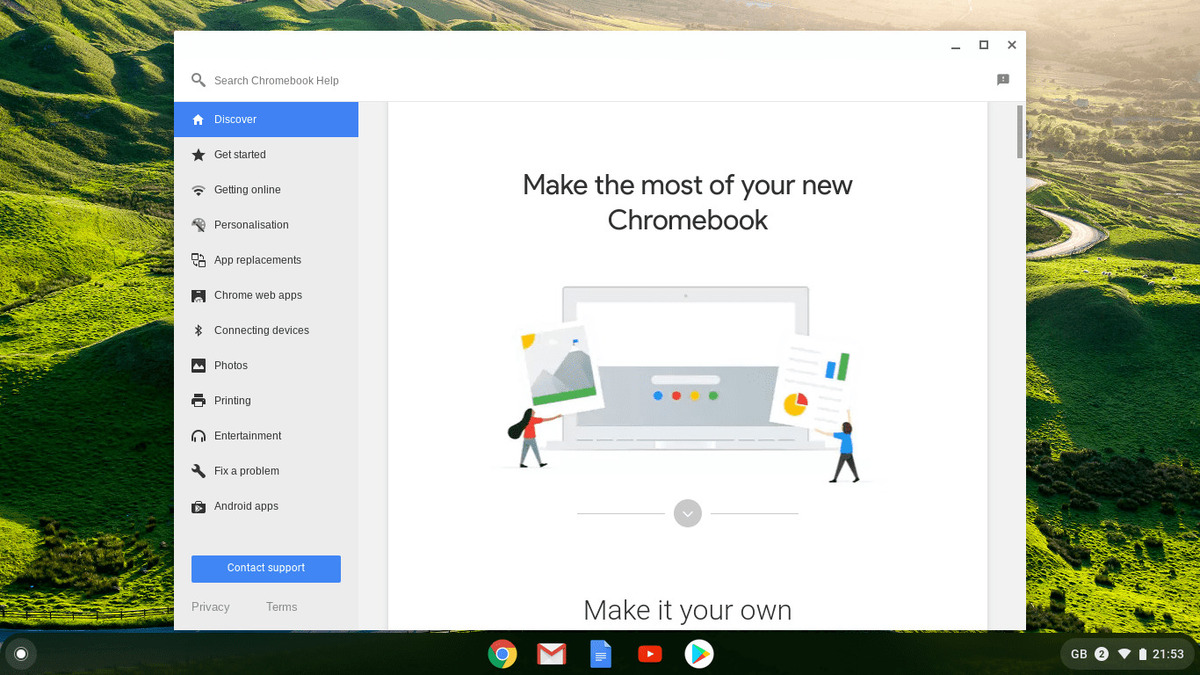
Introduction
Chromebooks have evolved from simple web-browsing devices to powerful tools for various tasks, including software development. One significant advancement is the ability to install and run Android Studio on Chromebooks. This guide will walk you through setting up Android Studio on your Chromebook, highlighting necessary steps, system requirements, and troubleshooting tips.
System Requirements
Before diving into the installation process, understanding the system requirements for running Android Studio on a Chromebook is crucial. According to Google, you will need:
- 8 GB RAM or more: Minimum recommended RAM for optimal performance. Higher RAM ensures smoother operation, especially with resource-intensive projects.
- 20 GB of available disk space: Sufficient storage space to install Linux apps and Android Studio, including necessary files and dependencies.
- 1280 x 800 minimum screen resolution: Higher screen resolution can improve the overall development experience, but the minimum specified is 1280 x 800.
- Intel i5 or higher (U series or higher) recommended: While Intel i5 or higher is recommended, other processors like AMD Ryzen series can also work, though performance might vary.
Recommended Devices
Not all Chromebooks are compatible with running Android Studio. Here are some recommended devices that support this feature:
- Acer: Chromebook 13/Spin 13, Chromebox CXI3, Chromebook 712 [C871]
- ASUS: Chromebox 3, Chromebook Flip C436FA
- CTL: Chromebox CBx1
- Dell: Inspiron Chromebook 14, Latitude 5300 2-in-1 Chromebook Enterprise, Latitude 5400 Chromebook Enterprise
- HP: Chromebook x360 14, Chromebox G2, Chromebook x360 14c
- Lenovo: Yoga C630 Chromebook, Flex 5 Chromebook
- ViewSonic: NMP660 Chromebox
Setting Up Your Chromebook
Before installing Android Studio, ensure your Chromebook is set up correctly.
Enable Developer Mode
Developer Mode is optional but necessary if you plan to debug apps directly on your Chromebook. To enable Developer Mode:
- Turn off your Chromebook.
- Hold the Escape and Refresh keys and power it back on.
- Press Ctrl-D to enter Developer Mode.
- Confirm the prompt to wipe your device every time it starts.
Enable Linux Apps
To run Linux apps, including Android Studio, enable Linux on your Chromebook:
- Open the Settings app.
- Find “Linux Apps” and click “Turn On.”
- Wait for the required files to download and a new Terminal app to open.
Enable ADB Debugging
ADB (Android Debug Bridge) is essential for deploying and debugging Android apps on your Chromebook:
- Open the Settings app.
- Click “Google Play Store” and then “Manage Android Preferences.”
- Enable Developer Options.
- Enable ADB debugging in the Developer Options menu.
Installing Android Studio
Now that your Chromebook is set up, proceed with installing Android Studio.
Download Android Studio
- Visit the Android Studio downloads page.
- Download the Linux version of Android Studio (e.g., ‘android-studio-ide-173.4907809-linux.zip’).
- Copy the downloaded zip file from your Chrome OS Downloads to Linux Files using the Files app.
Install Android Studio
-
Open the Terminal app.
-
Unzip Android Studio’s files using the following command:
bash
unzip android-studio-ide-173.4907809-linux.zip -
Start Android Studio by running:
bash
./android-studio/bin/studio.sh -
Follow the setup wizard to download required Android files and complete the installation process.
Running Android Studio
Once installed, launch Android Studio from the Terminal or by creating a launcher icon:
- Create a launcher icon by right-clicking on the desktop and selecting “Create shortcut” > “Browse files” > “android-studio/bin/studio.sh.”
- Run Android Studio by double-clicking on the created shortcut.
Setting Up Your Development Environment
After installing Android Studio, set up your development environment.
Configure SDK and NDK
- Open Android Studio.
- Go to File > Settings > System Settings > Android SDK.
- Download and install the necessary SDKs and NDKs for your project.
Configure ADB
-
Open a terminal.
-
Install ADB if necessary using:
bash
sudo apt install adb -
Connect to your device using:
bash
adb connect arc -
Authorize ADB by granting the necessary permissions.
Deploying and Debugging Apps
With Android Studio set up, deploy and debug your apps directly on your Chromebook.
Deploying Apps
- Open Android Studio.
- Select your project and go to Run > Deploy to device.
- Choose your device (in this case, your Chromebook).
- Authorize ADB if prompted.
Debugging Apps
- Set breakpoints in your code.
- Run your app in debug mode.
- Use the debugger to inspect variables, call stacks, and more.
Troubleshooting Tips
While setting up and running Android Studio on a Chromebook is generally straightforward, some common issues might arise.
Architecture Compatibility
If you have an ARM-powered Chromebook, you might face issues due to architecture compatibility:
-
Add the proper architecture by running:
bash
sudo dpkg –add-architecture amd64
sudo apt update -
Install JDK and its dependencies:
bash
sudo apt install openjdk-11-jdk-headless
Resource Issues
Android Studio is a resource-intensive IDE, so ensure your Chromebook meets the recommended specs:
- Check RAM and disk space to avoid performance issues.
- Close unnecessary apps to free up resources.
Connectivity Issues
ADB debugging over Wi-Fi can be insecure but is necessary if you can't use USB:
- Enable Wi-Fi debugging in Developer Options.
- Connect your device using ADB over Wi-Fi.
Running Android Studio on a Chromebook opens up new possibilities for developers, allowing them to build and test Android apps directly on their devices. By following these steps and ensuring your Chromebook meets the necessary system requirements, you can set up a robust development environment that leverages the unique benefits of ChromeOS. Whether you're a seasoned developer or just starting out, this guide provides a comprehensive overview of how to get started with Android Studio on your Chromebook.
